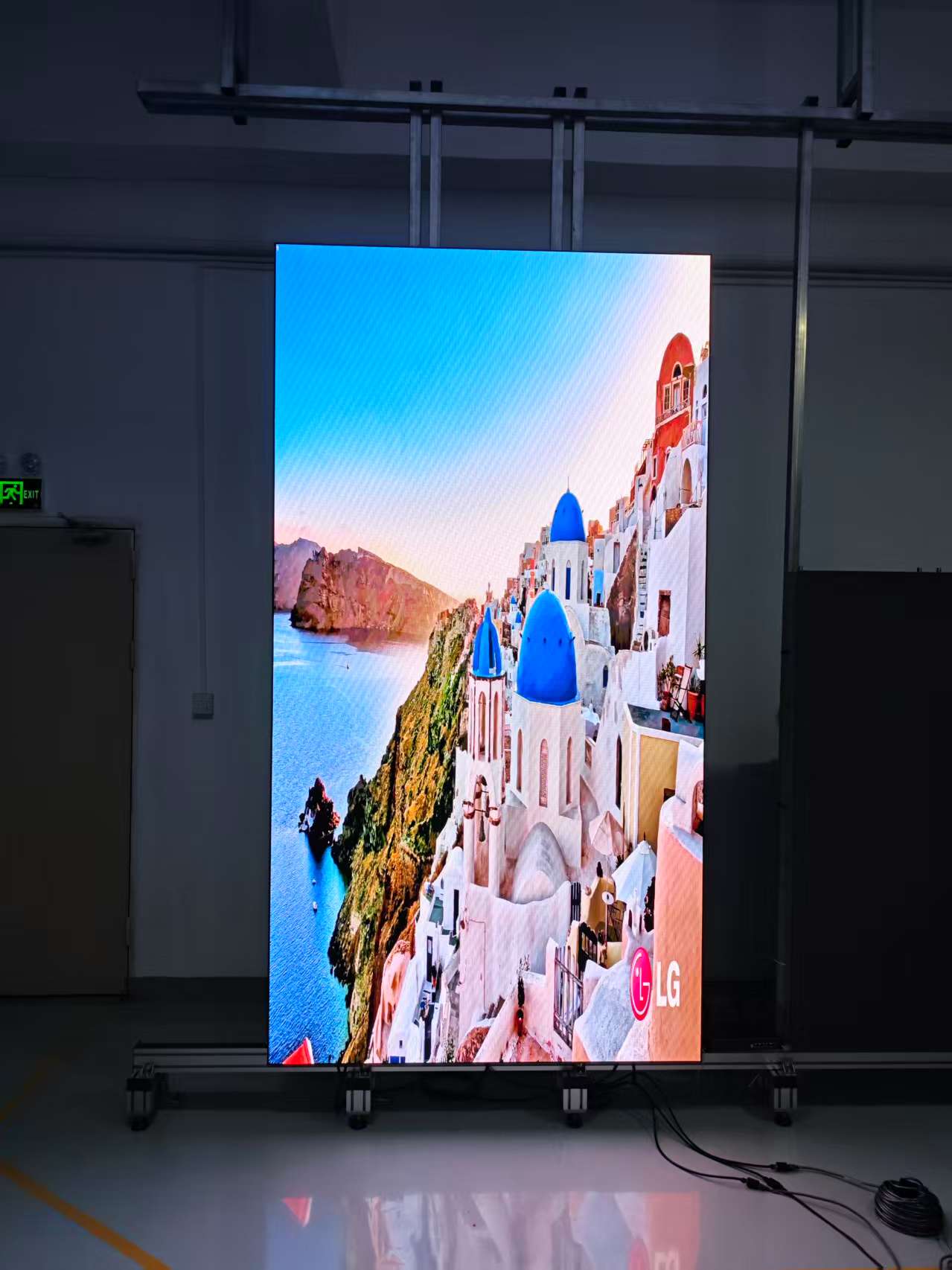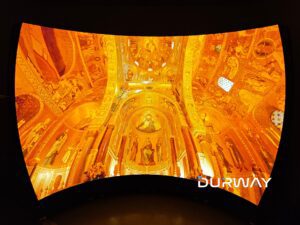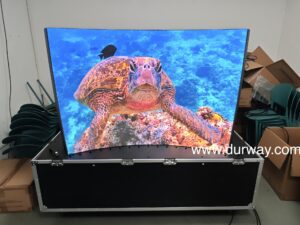Window Front LED Screen
How to Get Bright, Beautiful, And Long-Lasting Outdoor Digital Signage
For many retailers, QSR brands, and commercial property owners, the shopfront is no longer just glass and posters. It is a high-value media surface. A well-designed window front LED screen can turn a quiet storefront into an always-on digital billboard that works day and night.
But there is a balance to get right:
Bright enough to be clearly visible in daylight
Not so bright that colors wash out or LEDs age prematurely
In this article, we will look at how to design a window front LED screen that is practical, reliable, and profitable – with a special focus on brightness in the 3000–3500 nits range, which is often a sweet spot for this type of application.
What Is a Window Front LED Screen?
A window front LED screen (sometimes called a window LED display or storefront LED screen) is a fine-pitch LED display installed directly behind or integrated into a shop window or glass façade.
Typical use cases include:
Retail brands promoting new collections or campaigns
QSR and cafés highlighting menu items and promotions
Shopping malls and showrooms creating dynamic visual experiences
Property developers and car dealers showcasing high-value products
Unlike traditional outdoor digital signage mounted on poles or roadside structures, a window front LED screen usually targets viewers at short to medium distances (2–10 meters), often in mixed indoor/outdoor lighting conditions.
This makes pixel pitch and brightness two of the most critical design variables.
Why Not Just Use LCD for Window Advertising?
LCD displays are still widely used in windows, but they come with clear limitations when compared with LED:
Limited brightness
Many commercial LCDs struggle in bright ambient light, especially when sunlight hits the glass. Even “high brightness” LCDs often do not match a well-designed LED window screen in real conditions.
Fixed size and aspect ratio
LCD screens come in standard sizes (55″, 65″, 75″, etc.). Window openings are rarely that cooperative. LED allows you to customize size and shape to match the architecture.
Thermal and reliability stress
Glass-front environments can get hot. LCD panels are more sensitive to heat and prolonged full-brightness operation than LED.
Less flexible for future reconfiguration
With LED, you can reconfigure cabinets, expand, or change the layout more easily than with stacked LCDs.
As a result, many system integrators and digital signage importers are shifting their high-end projects from LCD to LED window solutions.
How Bright Should a Window Front LED Screen Be?
When planning outdoor digital signage behind glass, brightness is often the first question.
A common instinct is: “The brighter, the better.” But that is only partially true.
For typical window front LED screen applications:
3000–3500 nits is usually a very effective brightness range
It provides strong daylight visibility in most retail and commercial environments
At the same time, it helps maintain good color performance and longer LED lifespan
Going significantly above this range (for example 5000 nits or more) can introduce downsides:
Color accuracy degradation
Very high drive currents push LEDs near their limits. Colors may appear less saturated or uneven, especially at lower brightness levels.
Faster component ageing
High brightness operation generates more heat and accelerates lumen depreciation and potential failures over time.
Higher power consumption
More brightness means more watts. For 12–16 hours of daily operation, power costs quickly become a significant operational expense.
Glare and viewing comfort
In some settings, extremely bright screens can cause discomfort to pedestrians or users inside the store.
For most shopfront and showroom projects, the 3000–3500 nit range strikes a practical balance between visibility, aesthetics, and total cost of ownership.
Fine Pixel Pitch for Close Viewing
Another key aspect of a window front LED screen is pixel pitch. Because viewers are often close to the glass, a fine pitch is usually preferred.
Typical ranges:
P1.2–P1.5: Premium, close-viewing environments (luxury retail, automotive showrooms, high-end flagships)
P1.8–P2.5: General retail and shopping mall windows where viewing distance is a bit longer
P2.5+: Larger-format displays where people stand further back
Choosing the wrong pixel pitch can either:
Waste budget (too fine for the viewing distance), or
Damage perceived quality (too coarse, visible pixels and screen-door effect)
For a window front LED screen that replaces a 75″ LCD or similar, integrators often find that P1.5 or P1.8 delivers an excellent balance between resolution, cost, and viewing distance.
Mechanical Design and Installation Considerations
A successful project is not just about the LED tiles themselves. Mechanical and installation details heavily influence the outcome.
Modular cabinets for flexible sizing
Because every window is different, LED cabinets should be:
Available in standard but flexible sizes (e.g., 500×500mm, 500×1000mm, etc.)
Easy to combine into non-standard overall dimensions
Adjustable for small tolerances in the window frame
Front access for service
Window installations often limit access behind the display. A well-designed window front LED screen should allow:
Front removal of modules to reach power and data cables
Quick replacement of individual modules without removing the entire structure
This reduces service time and avoids disturbing the shop interior.
Cable management
Properly thought-out cabling ensures:
Clean internal appearance behind the glass
Easy troubleshooting and future upgrades
Reduced risk of accidental damage during assembly and maintenance
Well-designed products make it possible for installers to simply remove a few modules, connect cables between tiles, and then close the screen again without complications.
Content Strategy for Window Front LED Screens
Even the best hardware cannot compensate for poor content strategy.
For window digital signage:
Use high-contrast designs with clear focal points
Avoid very small text; design for quick glances
Adapt brightness and content tones for day and night (where possible)
Align playback with peak foot traffic and campaign schedules
Many brands also coordinate their online campaigns with their window LED content, creating an integrated storytelling approach across channels.
Reliability, Lifetime, and Total Cost of Ownership
When choosing a window front LED screen solution, system integrators and end-users need to consider:
LED quality and driver ICs
Stable color and consistent grayscale performance across brightness levels.
Thermal management
Good cabinet design, ventilation, and possibly environmental control around the screen.
Power efficiency
Screens that deliver 3000–3500 nits efficiently will have a lower long-term energy cost than poorly optimized ones.
Support and spare parts
Reliable access to modules, power supplies, and controller support ensures less downtime.
By designing within a reasonable brightness range and selecting quality components, you reduce stress on the system and preserve both image quality and hardware life over many years of operation.
Why a Balanced Brightness Strategy Matters
To summarize the brightness discussion:
Too dim:
The screen disappears in daylight, content is wasted, and the investment under performs.
Too bright:
You may gain marginal visibility but at the cost of:
Higher power bills
Lower color fidelity
Shortened LED lifespan
Balanced (3000–3500 nits):
This is often the sweet spot for window front LED screens:
Bright enough for most real-world conditions
Gentle enough to preserve color and component life
Easier to manage from a power and thermal perspective
The right window LED setup becomes a reliable visual asset, not a maintenance headache.
Working With a Specialist Partner
For AV integrators, digital signage importers, and system designers, having an experienced OEM / manufacturing partner behind your window front LED screen projects makes a big difference.
A good partner should help you:
Select the right pixel pitch and brightness for each site
Design mechanical structures and mounting tailored to the window
Provide pre-configuration and guidance to simplify on-site installation
Support long-term operation with spares, documentation, and technical assistance
At Durway, we focus on high-quality LED display solutions for retail, outdoor digital signage, immersive environments, and specialty applications like domes and simulators. Our window front LED products are engineered with installer-friendly mechanics, efficient brightness around 3000–3500 nits, and configurations optimized for shopfront and glass façade environments.
If you are planning your next window front LED screen or upgrading from LCD-based outdoor digital signage, we would be happy to discuss your project in detail and propose a solution built around your viewing distance, environment, and budget.
Visit us at: www.durway.com
Get in touch to discuss your next LED window display project and explore how we can support you from concept to installation.








